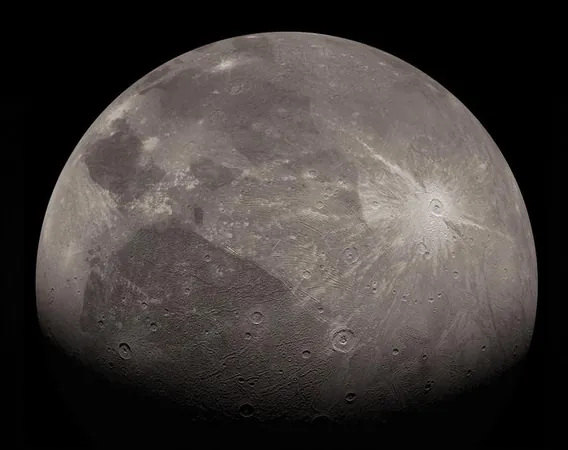
Revolutionary Research Reveals Unexpected Secrets of 'Space Ice'
2025-07-08
Author: Rajesh
Unlocking the Mysteries of Space Ice
In a groundbreaking study by researchers at UCL and the University of Cambridge, the enigmatic substance known as 'space ice' has been unveiled to possess astonishing properties, challenging longstanding scientific assumptions.
A Closer Look at Amorphous Ice
Unlike the crystalline ice we see on Earth, space ice has been thought to be a chaotic, disordered material. Traditional theories suggested that its colder temperatures prevented it from forming crystalline structures. But this new research sheds light on a far more intricate reality.
Major Discoveries in Cosmic Ice Formations
Focusing on low-density amorphous ice—the predominant form of ice found throughout the universe in places like comets, icy moons, and star-forming dust clouds—the team discovered that this ice actually contains minuscule crystals, measuring just three nanometers wide, embedded within its disordered matrix.
The Origins Shape the Structure
Experimental investigations involving the heating of real amorphous space ice samples revealed that the structure of the ice varied based on its origins. Ice that was initially fully amorphous didn’t retain any traits of its previous state, revealing a complex interplay between formation processes and structural properties.
Implications for Life's Origins
The findings could have profound implications for understanding life on Earth. The Panspermia theory suggests that life's building blocks arrived on Earth via ice-laden comets, with amorphous ice playing a pivotal role as a cosmic transport medium. However, Dr. Michael Davies noted that the presence of a crystalline structure could limit the space available for embedding vital molecules, posing questions about this theory's validity.
Broader Significance for Science and Technology
Co-author Professor Christoph Salzmann highlighted the intrigue of space ice compared to Earth ice, emphasizing that our warm planet only provides a glimpse of its cosmic counterpart. The revelations extend beyond cosmic explorations; they open up discussions regarding the nature of amorphous materials in technology. For instance, if tiny crystals are present in materials like glass fibers used for data transmission, their removal could enhance performance.
A Continuous Journey of Discovery
This research has sparked a myriad of questions regarding the characteristics of amorphous ice, including variations in crystal size based on formation processes. First identified in the 1930s, with high-density forms discovered and explored since, amorphous ice continues to hold mysteries that could unravel some of water's greatest anomalies, as noted by Professor Angelos Michaelides.
Conclusion: The Secret Life of Ice
As we probe deeper into the secrets of ice that exist beyond our planet, we inch closer to unlocking the mysteries of not only space but also the fundamental nature of life itself. With such exciting developments, the journey of understanding space ice has only just begun.

 Brasil (PT)
Brasil (PT)
 Canada (EN)
Canada (EN)
 Chile (ES)
Chile (ES)
 Česko (CS)
Česko (CS)
 대한민국 (KO)
대한민국 (KO)
 España (ES)
España (ES)
 France (FR)
France (FR)
 Hong Kong (EN)
Hong Kong (EN)
 Italia (IT)
Italia (IT)
 日本 (JA)
日本 (JA)
 Magyarország (HU)
Magyarország (HU)
 Norge (NO)
Norge (NO)
 Polska (PL)
Polska (PL)
 Schweiz (DE)
Schweiz (DE)
 Singapore (EN)
Singapore (EN)
 Sverige (SV)
Sverige (SV)
 Suomi (FI)
Suomi (FI)
 Türkiye (TR)
Türkiye (TR)
 الإمارات العربية المتحدة (AR)
الإمارات العربية المتحدة (AR)